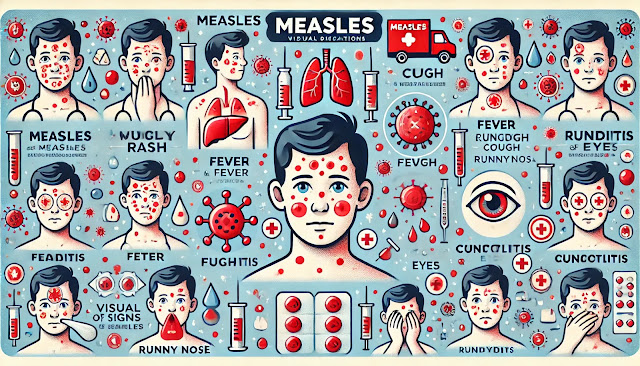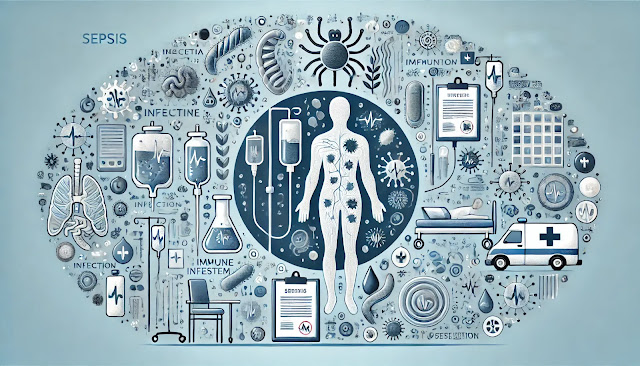1. Definition of Eosinophilia Eosinophilia refers to an elevated level of eosinophils, a type of white blood cell, in the blood. Eosinophils play a role in immune responses, especially in fighting parasitic infections and responding to allergic reactions. When eosinophil levels are abnormally high, it can indicate underlying health conditions. 2. Causes of Eosinophilia Eosinophilia can be caused by various factors, including: Allergic reactions : Conditions like asthma, hay fever, and food allergies can trigger eosinophilia. Parasitic infections : Parasites such as roundworms, hookworms, or other types can elevate eosinophil levels. Autoimmune diseases : Certain autoimmune conditions, like lupus or vasculitis, may cause eosinophilia. Medications : Certain drugs, including some antibiotics and anticonvulsants, can lead to increased eosinophils. Cancer : Some cancers, particularly blood cancers like leukemia, can result in eosinophilia.
%20in%20children,%20with%20a%20focus%20on%20medical%20illustration.%20The%20image%20should%20highlight%20sy.webp)

%20in%20a%20medical%20context.%20The%20image%20should%20show%20a%20close-up%20of%20a%20foot%20.webp)
%20in%20a%20medical%20context.%20The%20image%20should%20show%20a%20close-up%20view%20of%20the%20foot%20wi.webp)
%20in%20a%20medical%20context.%20The%20image%20should%20depict%20symptoms%20such%20as%20joint%20sw.webp)
%20in%20a%20medical%20context.%20The%20image%20should%20show%20an%20anatomical%20view%20.webp)
%20in%20a%20medical%20context.%20The%20image%20should%20depict%20symptoms%20like%20muscle%20weakn.webp)

%20in%20a%20medical%20context.%20The%20image%20should%20depict%20symptoms%20like%20localized%20.webp)
%20in%20a%20medical%20context.%20The%20image%20should%20depict%20symptoms%20like%20bone%20p.webp)
%20in%20a%20medical%20context.%20The%20image%20should%20depict%20common%20symptoms%20such%20as%20joint%20p.webp)
%20in%20a%20medical%20context.%20The%20image%20should%20depict%20weakened%20bones,%20bone%20fractur.webp)

%20in%20a%20medical%20context.%20The%20image%20should%20show%20com.webp)
%20in%20a%20medical%20cont.webp)
%20in%20a%20medical%20context.%20The%20image%20should%20depict%20symptoms%20such%20as%20chroni.webp)
%20in%20a%20medical%20context.%20The%20image%20should%20depict%20sym.webp)
%20in%20a%20medical%20context.%20Show%20symptoms%20like%20constant%20throat%20clearing,%20cough,%20sore%20throat,.webp)
%20in%20an%20ENT-related%20medical%20context.%20The%20image%20should%20depict%20common%20sym.webp)
%20in%20an%20ENT-related%20medical%20context.%20The%20image%20should%20depict%20common%20sympt2.webp)
%20in%20an%20ENT-related%20medical%20context.%20The%20image%20should%20include%20a%20depiction%20o.webp)
%20in%20an%20ENT-related%20medical%20context.%20The%20image%20includes%20a%20depiction%20of%20a%20person.webp)

.%20The%20image%20should%20illustrate%20symptoms%20such%20as%20dizziness.webp)

.%20The%20image%20should%20illustrate%20symptoms%20such%20as%20ear%20pain,%20itching%20in%20t.webp)


.%20The%20image%20should%20illustrate%20symptoms%20such%20as%20sore%20throat,%20coughi.webp)
.%20The%20image%20should%20illustrate%20symptoms%20such%20as%20blood%20dripping%20from%20the%20nostril.webp)

.%20The%20image%20should%20illustrate%20symptoms%20such%20as%20sinus%20pressure,%20nasal%20con.webp)

.%20The%20image%20should%20illustrate%20symptoms%20such%20as%20e.webp)


.%20The%20image%20should%20show%20common%20symptoms%20such%20as%20difficulty%20un.webp)

.%20The%20image%20should%20feature%20visual%20representations%20of%20key%20symptoms%20such%20as.webp)
.%20The%20image%20should%20feature%20visual%20representations%20of%20key%20s.webp)

.%20The%20image%20should%20feature%20visual%20representations%20of%20common.webp)
.%20The%20image%20should%20include%20visual%20representations%20of%20commo.webp)



.%20The%20image%20should%20include%20visual%20representations%20of%20key%20symptoms%20such%20as%20a.webp)
